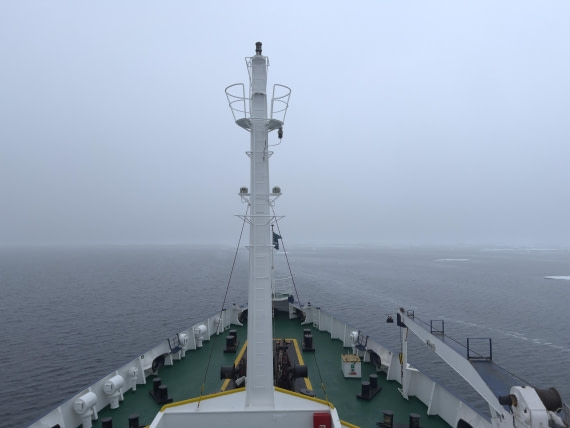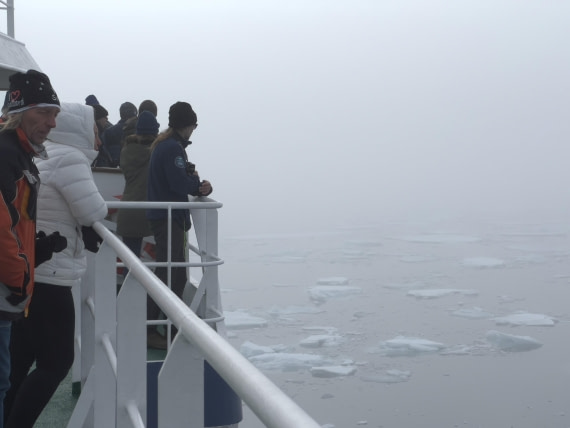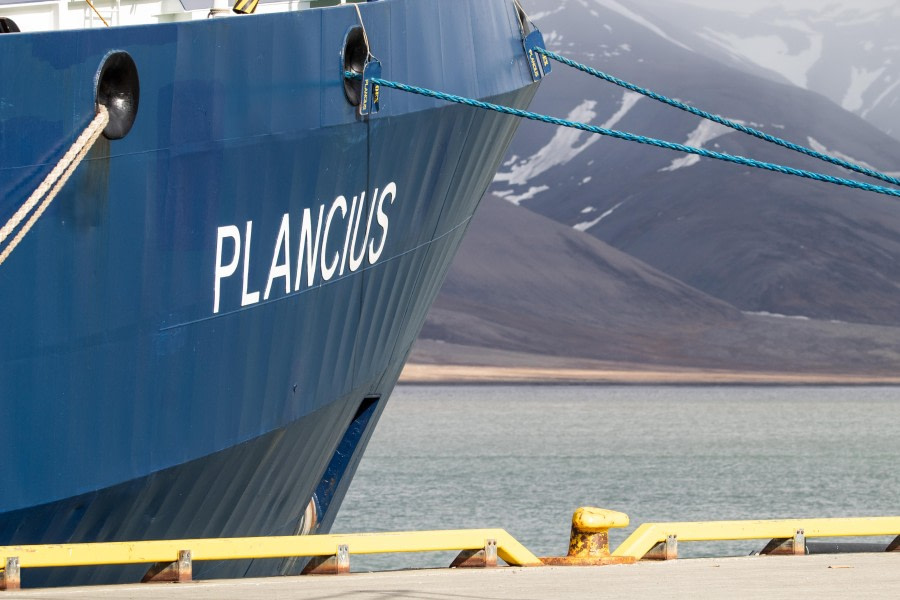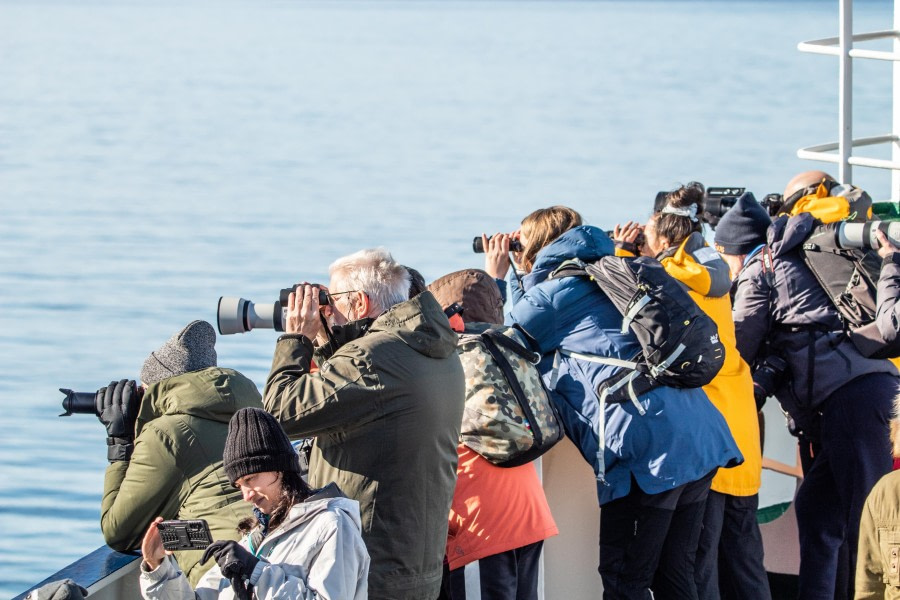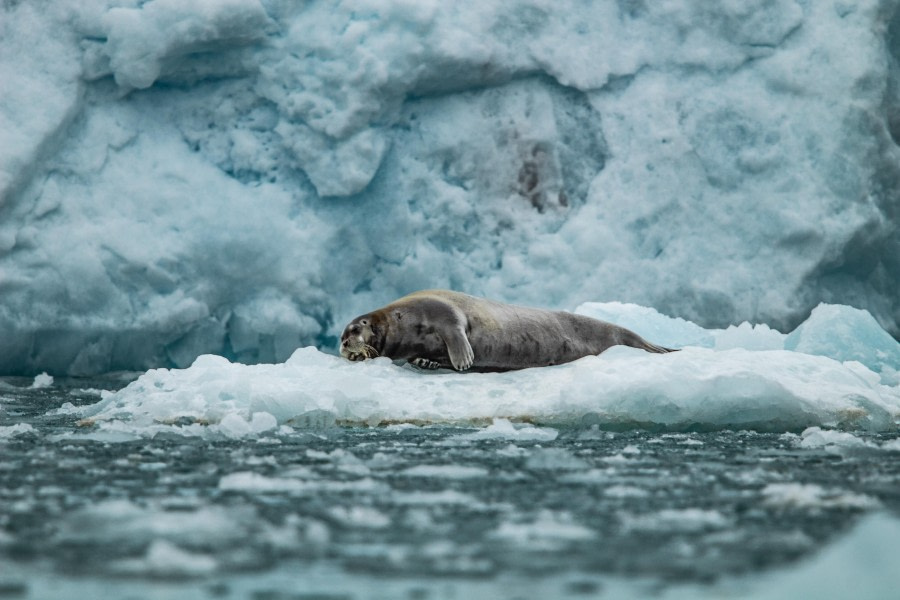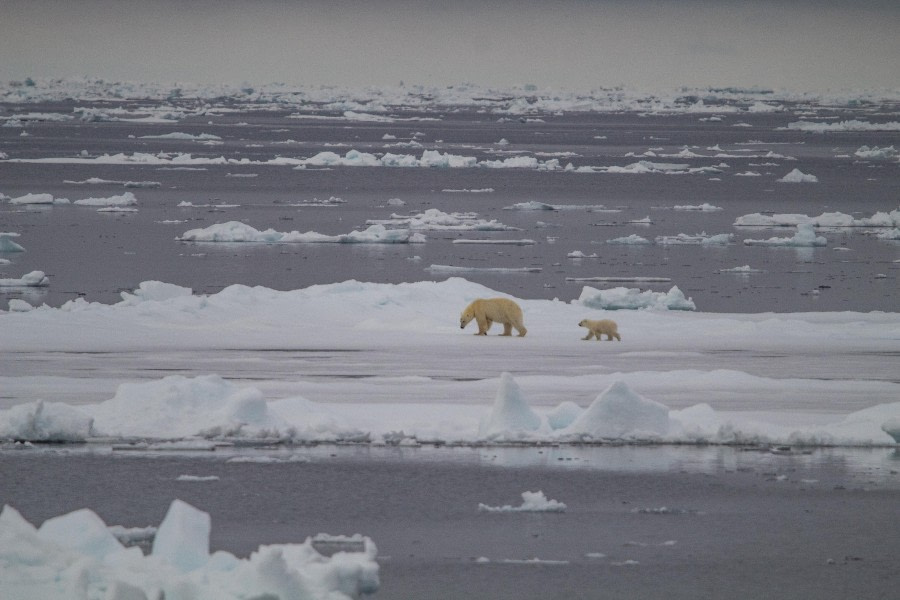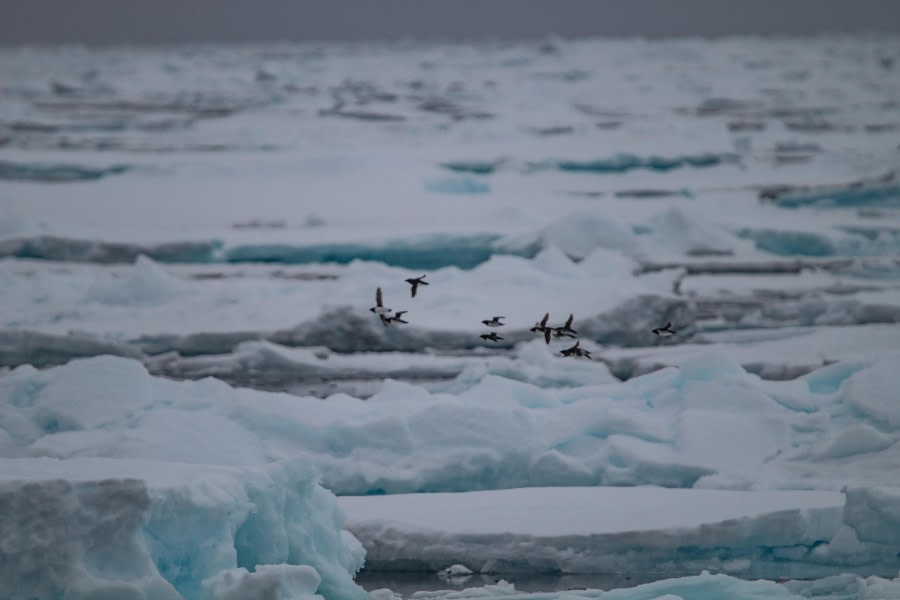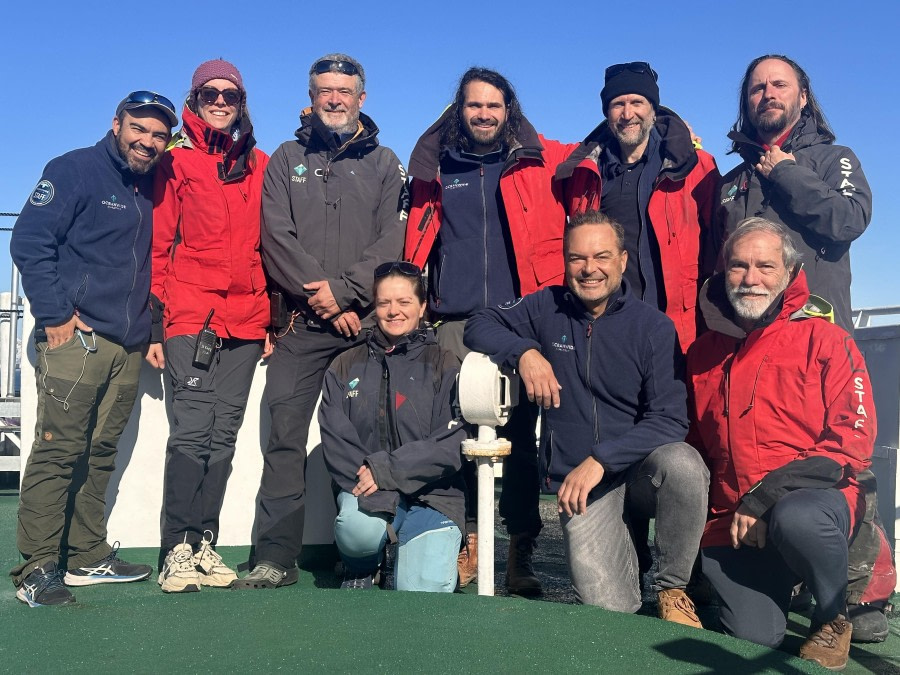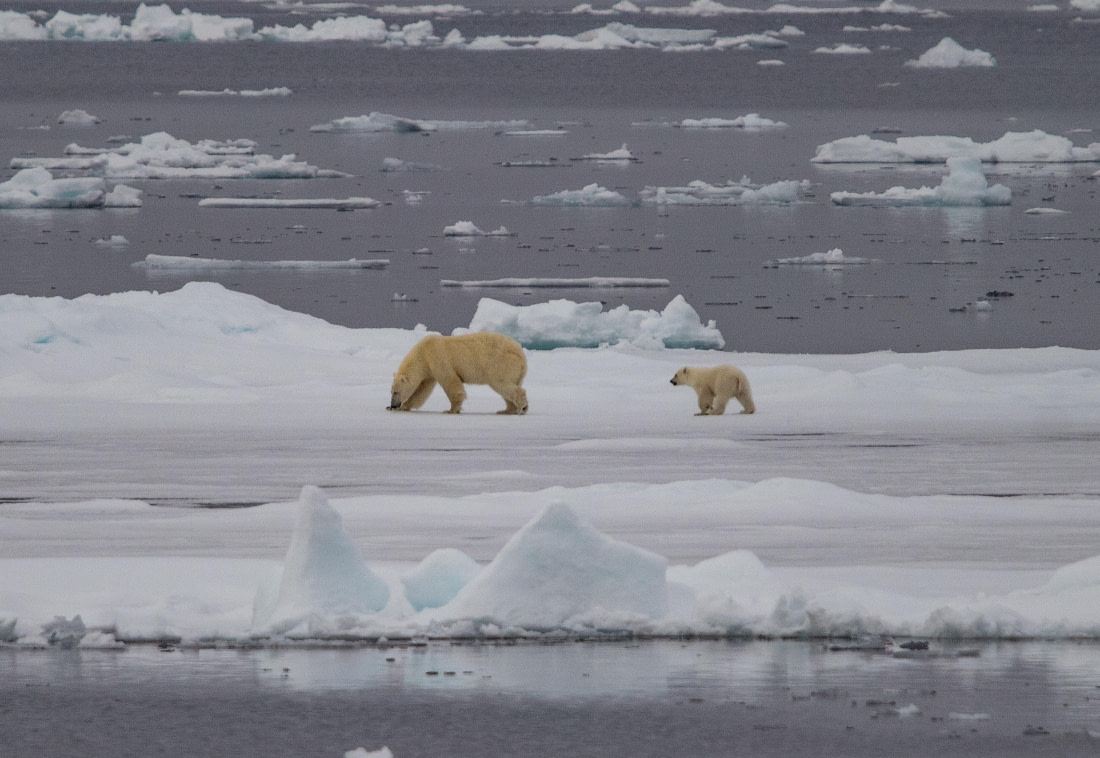| Fecha: |
14.06.2024 |
| Posición: |
79°49.5’N / 011°54.6’E |
| Viento: |
NW3 |
| Clima: |
Overcast |
| Temperatura del Aire: |
+2 |
We enjoyed and appreciated the smooth sailing during the night. Most of us had never spent a night onboard a ship and for that reason at least some were afraid getting seasick or whatever.
During the night we sailed north following the west coast. We woke up in the Northwest corner of the main island of the archipelago and approached a narrow passage, called Sorgatted between Spitzbergen and Danskøya. The coastline and the shape of the mountains differed completely from that in the surrounding of Longyearbyen, not flat on the top, now pointy. While approaching the passage, a Polar Bear was spotted and suddenly the whole ship was awake, some of us were still in bed at that time because it was not yet breakfast time. The bear was walking on a mountain slope and was quite hard to spot, however, most of us managed to have a look by the use of binoculars. It was great to see how he continuously walked in a slow pace, probably in search for something to eat. Later he went into the Magdalenefjord, and we continued, aiming for Sorgatted.
The passage was quite narrow so details of the coastline, like a small cabin and other landmarks could be seen well. We entered the Smeerenburgfjord, named after the whaling station of Smeerenburg on Amsterdamøya. We found ourselves suddenly surrounded by several glaciers, small bays and pointy mountains - beautiful scenery. We enjoyed being on the outside decks and trying to capture the surroundings in images. While cruising our expedition staff, well trained in spotting bears, was again successful in finding a polar bear, this time high up on a moraine. While it was hard to see, some managed by using the scope. That bear, likely a female with a cub, was not active at all and just resting.
After a good breakfast we continued cruising in Smeerenburgfjord and entered the Bjørnfjord with the huge Smeerenburgbreen. We spent a nice time with enjoying the spectacular scenery, with a lot of wildlife around us, Walrus and King Eiders, just to name the most special ones.
Later in the morning, we gathered in the lounge for our last mandatory meeting. We learned about Zodiac operations and how to behave in polar bear country. We sailed out of the fjord and cruised in between the many islands of the Northwest corner of Spitzbergen and entered the Raudfjord. As it was not a big distance that Plancius had to cover, we dropped the anchor soon after lunch at Hamiltonbukta.
After a good lunchbreak our expedition team offered us a Zodiac cruise in that beautiful bay. There was a lot to see, a glacier, small islands with breeding geese and a steep cliff which was home for thousands of Brünnich’s Guillemots and Kittiwakes. All of us explored the area and in the end returned to the bird cliff where an Arctic Fox searching for food. It was quite hard to spot because it was well camouflaged, not having a white fur, but instead a brown summer coat one. It was not only the scenery, but also the sound at that place which was special.
We all would have liked to stay but our expedition team was planning one more activity today, which was a ships cruise in the southern part of the Raudfjord. As we cruised the sky cleared to glorious sunshine with no wind. Plancius sailed south while a lot of experienced eyes kept watching in any possible direction. They found another polar bear, this time walking along the shoreline. With a bit of help we all managed to find the right spot. The light was perfect and the ship stable and we all watched as it entered a bay and escaped out of sight.
We continued our trip in direction of Raudfjordbreen. The landscape looked like a magazine advertisement for Spitzbergen, blue sky, no wind, white snow and a huge glacier. It was also the feeding ground for a lot of bird species, including Kittiwakes and Guillemots, to name only two. It was a great evening and for that reason the recap postponed twice, as it was much too nice to go inside. In the end, Jan offered a recap after dinner, and we learned the plans for tomorrow.
In the late evening hours, we went out of Raudfjorden in direction of our next adventures.


